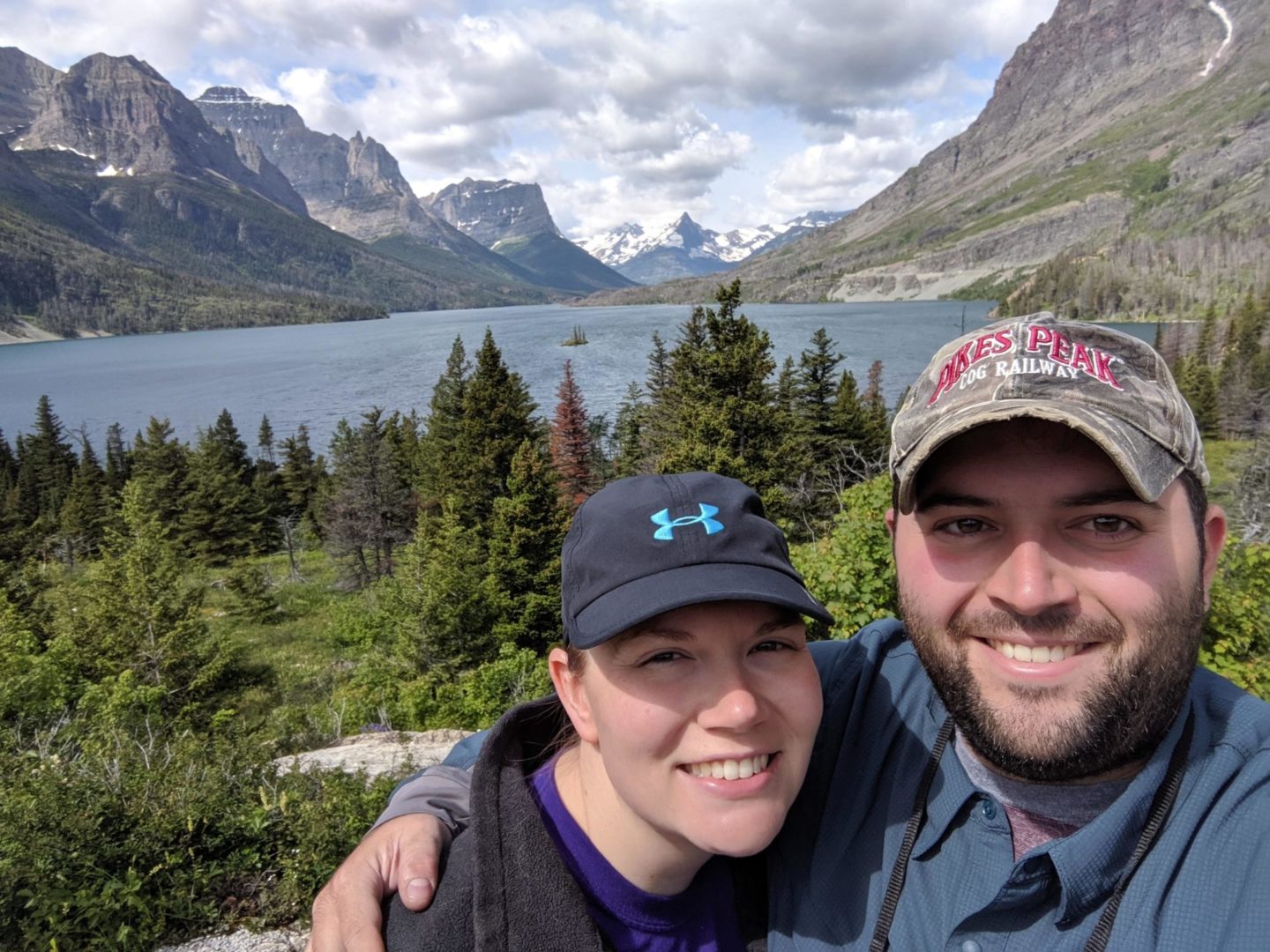Hello! Well, lets get on with the COVID stuff. Still hunkering down, keeping distance and all that. Looks like the new cases are starting to kinda plateau (emphasis on plateau). However, we can’t let up yet since a good chunk of the population haven’t been exposed yet. We don’t want our hospitals to get overloaded again like in the first wave. The good news is it looks like State and National parks are starting to open up again! Which brings me to think about our big camping trip we did last summer to Glacier and Yellow Stone National park. Onto the Post!
What National Park do we hit up?!
My wife and I have had our share of camping experiences in the past. She camped a ton with her dad growing up and I only started camping when I met her. We’ve gone and done local trips here in Illinois, Michigan, Wisconsin, Kentucky, and Tennessee. But we’ve done no trips out west! We started looking at national parks in that direction and settled on two must haves. Glacier National Park in Montana and Yellow Stone Nation Park in Wyoming.
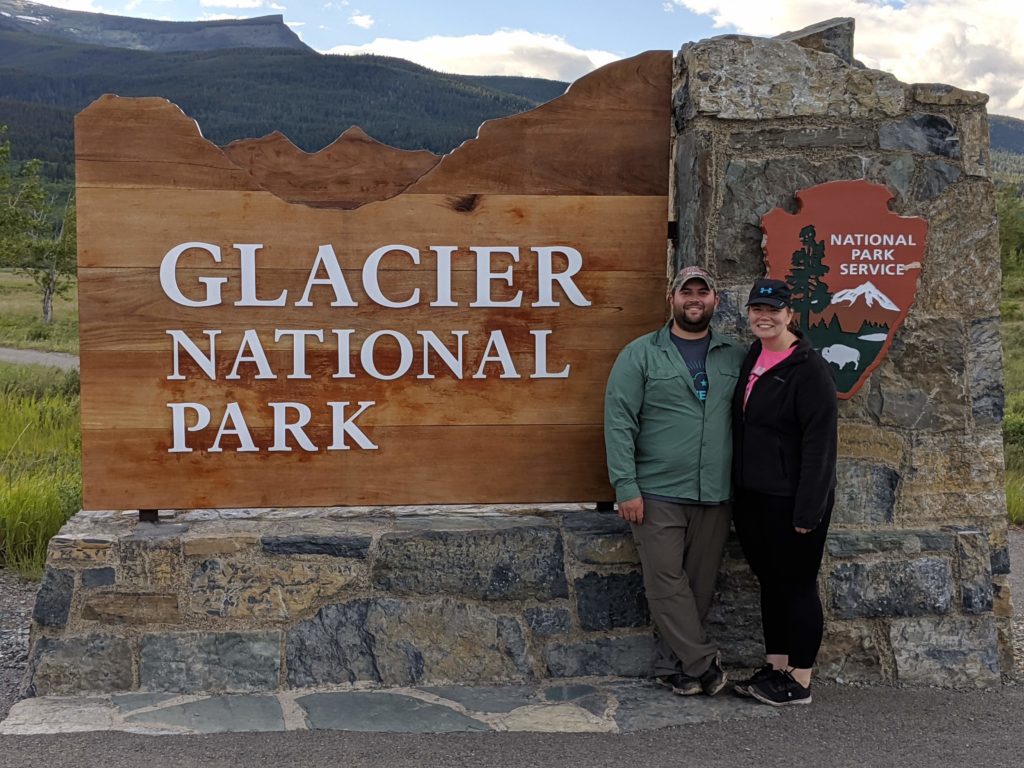
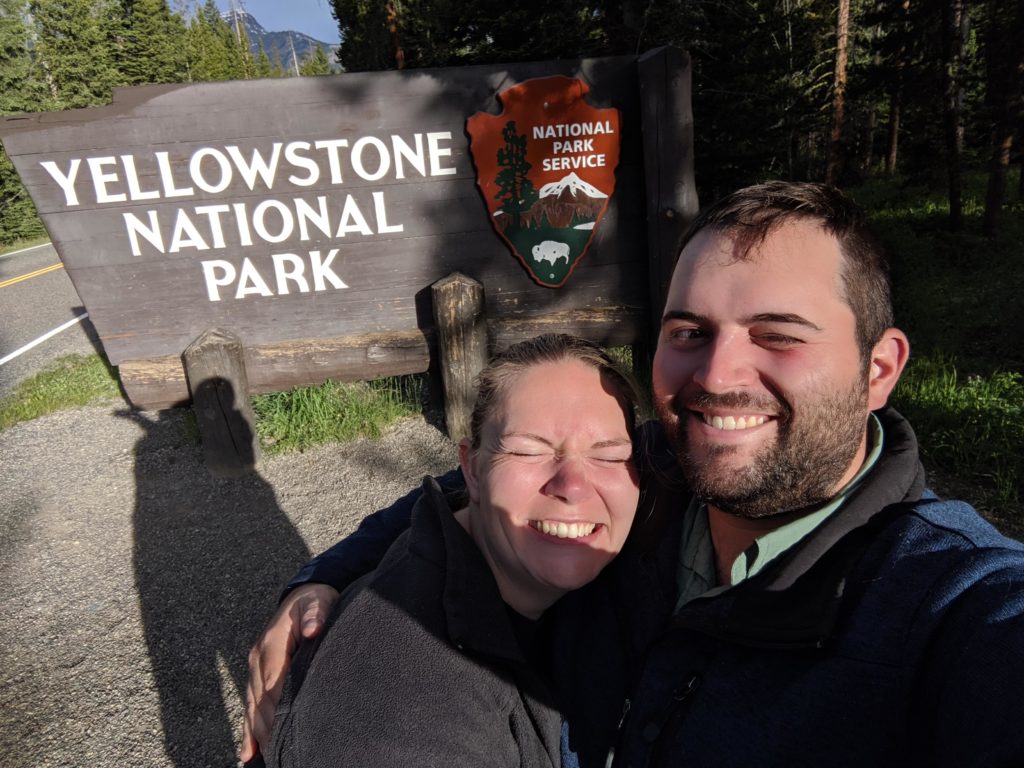
We heard of Glacier National Park through word of mouth. My wife’s co-workers have gone and showed us lots of vistas from their hikes. For being such a beautiful place, it was Grizzly country, but I’m getting ahead of myself 🙂 Yellow Stone was a obvious pick. Between having a ton of geysers, bacteria beds, and other amazing geographical phenomena, it was a must go.
On the way there since the drive would be over 24 hours, we would stop in North Dakota at Theodore Roosevelt National Park in the heart of the Badlands. On the way back, we would stop in South Dakota and as fate would have it, spend the 4th of July with Mt. Rushmore!
With our destinations set and our gear checked, we set off!
Onward to the Teddy National Park!
3 am, we set off! My Civic was packed to the brink of collapse. A tent, canopy, clothes, boots, food, hiking packs, bikes, kayaks, and totes full of cooking utensils. All jam packed in my car. We barley had enough room for the person in the passenger seat to be able to lay back and catch some zzz’s. The drive to Theodore Roosevelt is about 14 hours with change. With enough daylight to spare we decided to do a bit of exploring.
We saw wild horses grazing by the roadside. Buffalo grazing out in a field. A wild Frank taking a shit and some amazing majestic views right after a thunderstorm!
Settling in for the night, we got some sleep, packed up things in the morning and set off again for Montana!
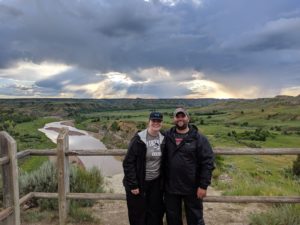
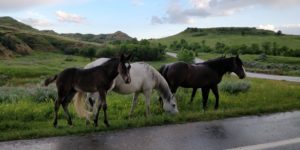
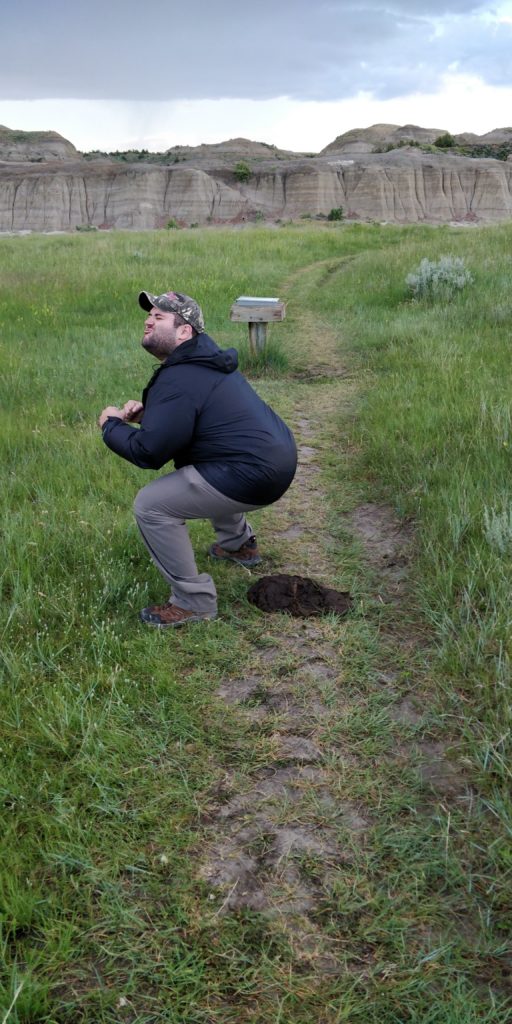
Glacier Nation Park: Grizzly Country
10 hours later we arrived. Its funny how when driving into mountainous terrain they always look like clouds from really far away. Inside the mountain range is was amazing! Being surrounded by snow caps, super tall pines, and fantastic winding roads right into the mountain side.
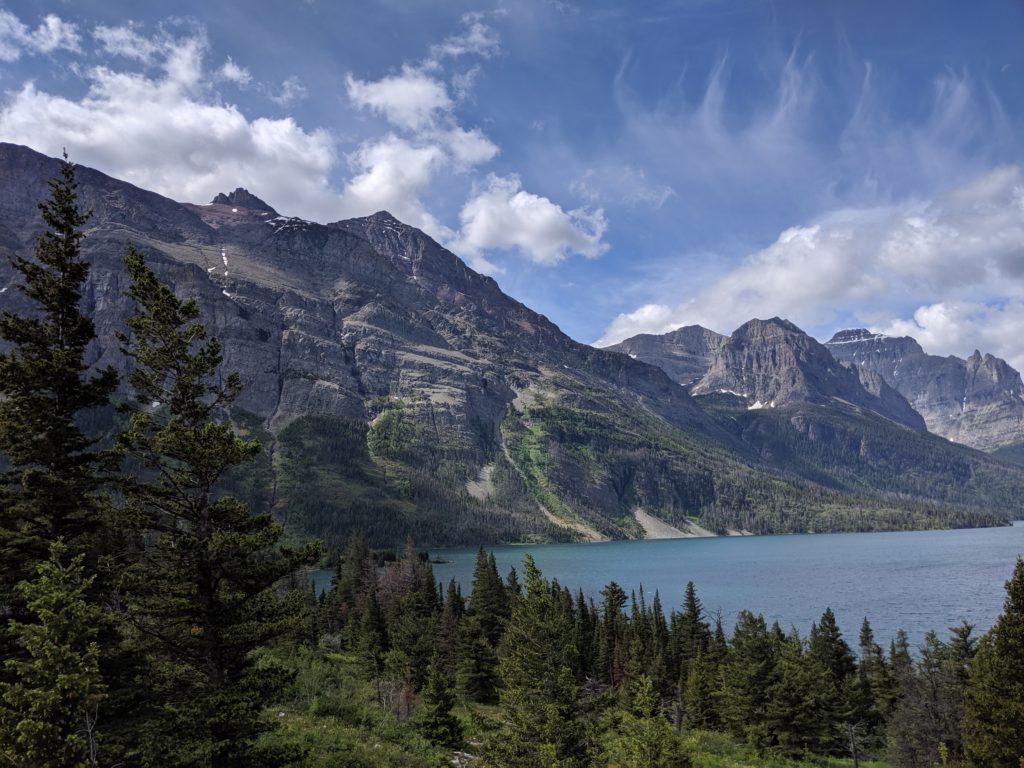
We made our way to our camp ground to find a good site. Finally finding out (I mean that place was packed!), we started to get settled in. One thing we noticed when we were driving around looking for a spot, many of the other sites were barely setup. Not really thinking much of it, we fully setup and went to the main office to pay for our site. When we got back we got a note from a ranger.
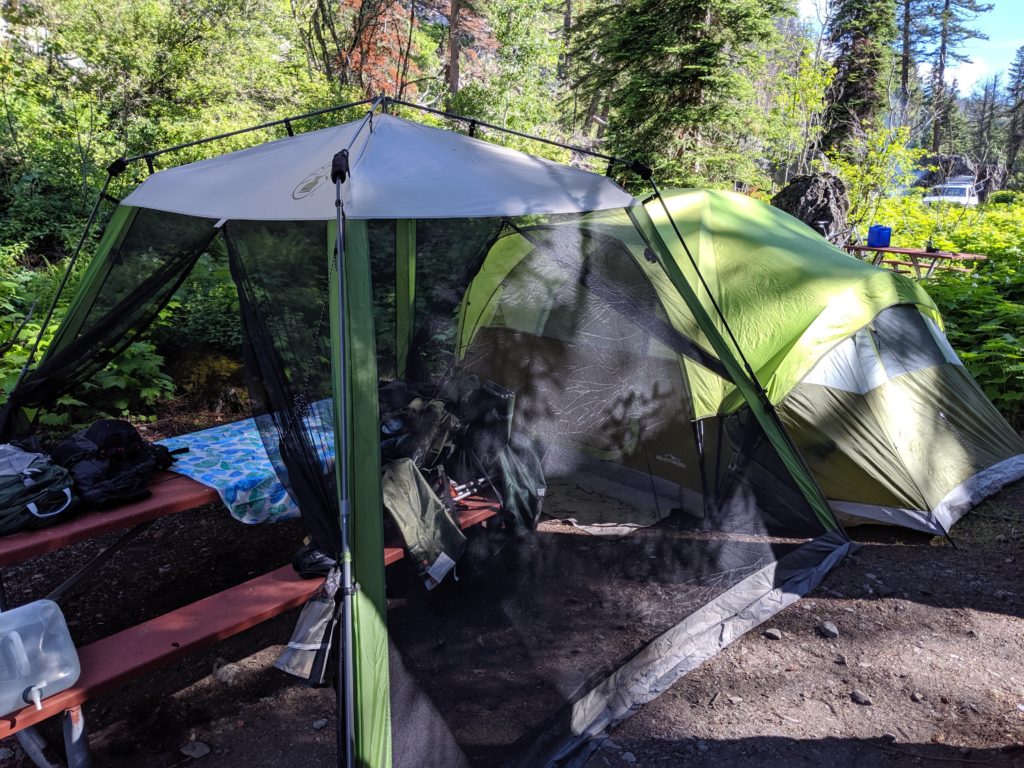
Turns out, leaving out anything food related out unattended at your campsite at Glacier is a huge no no. I mean, back in Illinois the biggest threat for left out food is Raccoons. Even then, we never left food out, but we would leave utensils and do dishes without issue. Turns out in Montana because they have Grizzly Bears, food items can be a huge threat.
The Grizzly bear’s sense of smell is incredible. They can smell food up to 18 miles away and they can smell food molecules well after they have been cleaned off pans, pots and utensils. Which is why you are not allowed to wash your dishes, leave out anything scented (including bug spray), or keep food in your tent, even if its in a cooler. The note wrapped up with where we can gather our things.
Dealing with bears of Glacier Nation Park
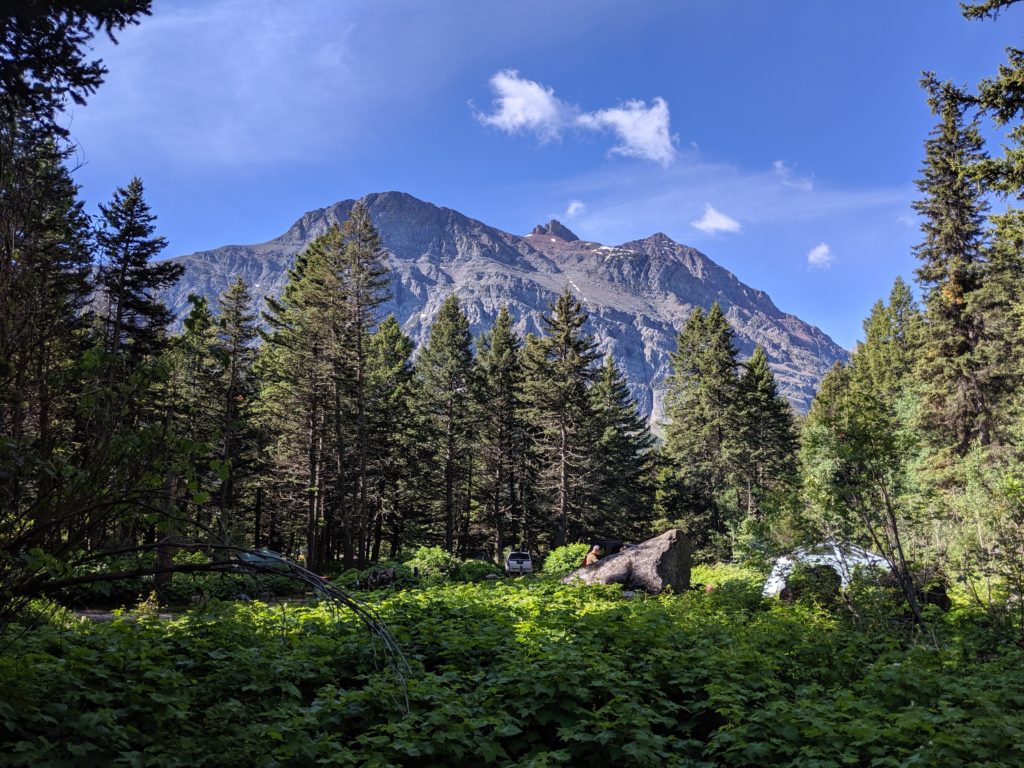
Sure enough, after we get our stuff back and got back to our site, we start hearing air horns go off. People down the path started yelling “Bear! BEAR!!!” People across from us shouted for us to get in our cars. Didn’t have to tell me twice! My wife and I, sitting in our car, second guessing this whole trip, waiting for the all clear. Turns out it was just a black bear, walking around on the mountain side above the camp ground.
All the air horns and shouting are deterrents to keep them away. Bears don’t want to deal with us as much as we don’t want to deal with them. It’s actually a really good idea when on a hike to periodically clap and yelp “HEY BEAR!”, just to give the ones up the path a heads up that you are coming. However, after talking to a professional trapper moving a family of marmots at the park, bears can be pretty dangerous.
How to trap a bear
The trapper told us a couple of stories when he had to catch a grizzly. The first being when they had a steel snare tied around a tree to trap a mama grizzly. It worked initially, but a stressed 1000 lbs grizzly will mindlessly walk the trap around the tree. Walk around so much, that the cable cuts the tree down. When snares don’t work, they bust out a segment of concrete sewer pipe. On each end of the pipe is a 400 lbs door and in the middle is the bait. If all goes right, the bear takes the bait and the doors come down. In case things go south there is someone there with a shotgun.

Why am I rambling about bears and traps and deterrents so much? Because the sad truth and motto when it comes to Bears and National Parks, a fed bear is a dead bear. When a bear finds a solid food source, like a campground, it keeps coming back for more. Making things worse, mother bears teach their young where they can find food, creating a cycle. So if you decide to visit Glacier and get yelled at by a ranger for leaving stuff out, its not because you might draw a bear to the campsite and put everyone in danger. It’s because you will get that bear killed.
Up to Logan Pass
Going to the sun road, a 50 mile stretch of two lane road that winds itself all the way through the park. At the half way point is Logan pass. Logan pass is the highest paved road in the park, at a whopping 6,646 ft! On the way up to the pass, you drive through waterfalls, lots of switch backs, and massive piles of melting snow. In fact, had we arrived a week earlier, the pass would have still have been covered in 12 ft of snow. It takes some heavy machinery to move all that. Otherwise you’re forced to drive all the way around the 1,000,000+ acres of park to get to the other side!
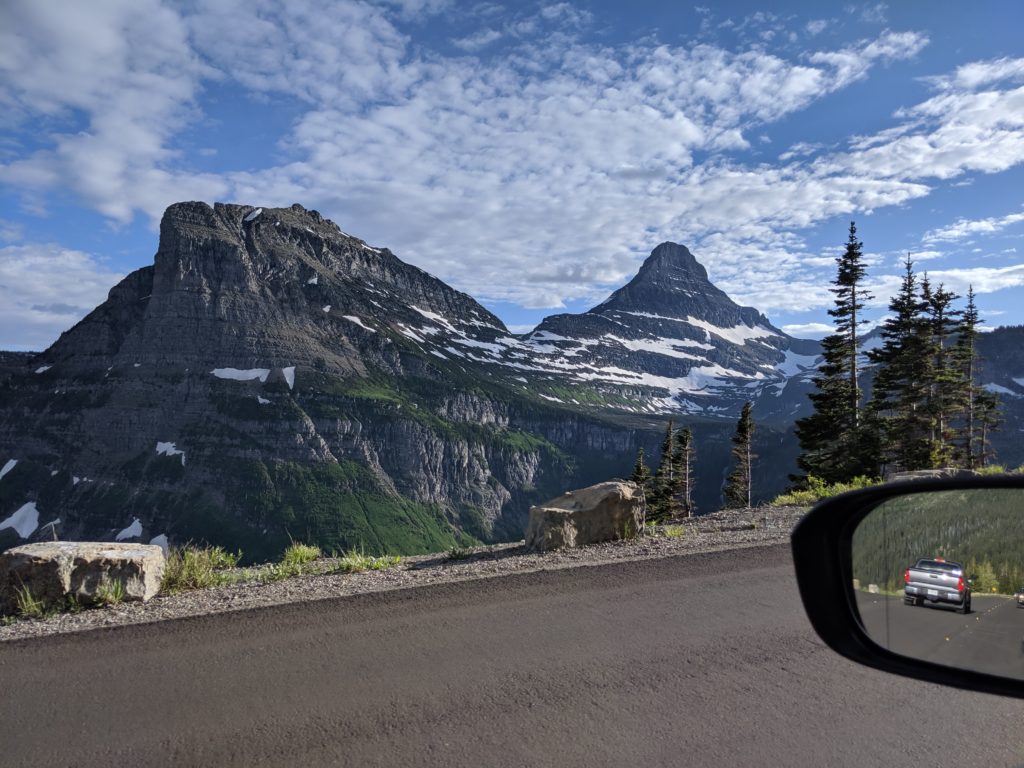
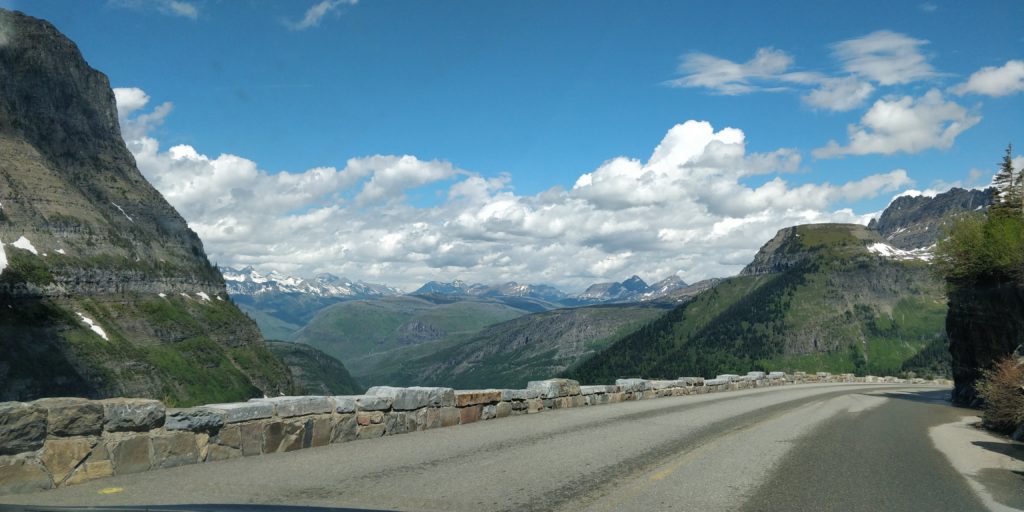
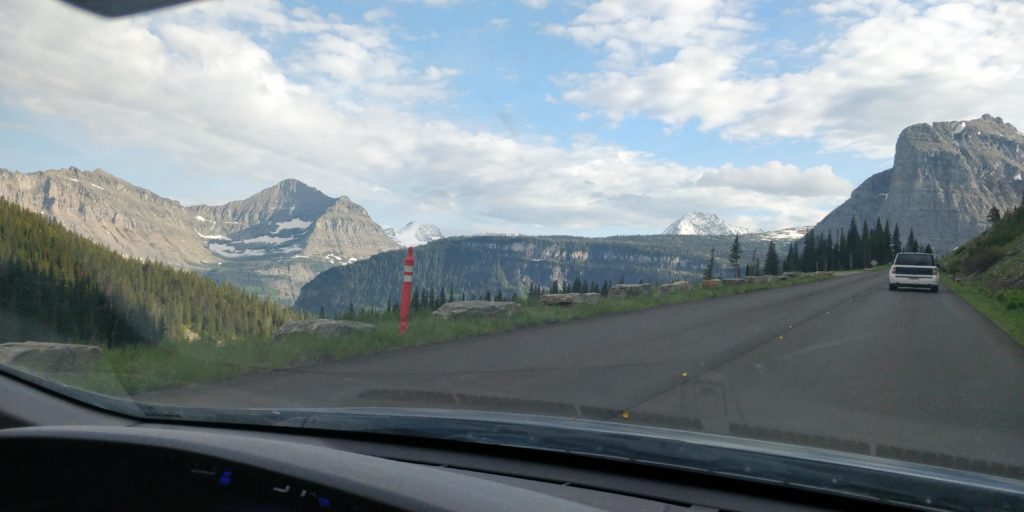
Lots waterfalls to see on the way up!
The building at the top of the pass is an informational center where you can get maps and talk to rangers about other parts of the park. There are even two trails up there that let you walk up into the snowy summits. We did one called Hidden lake, about 1.7 mi. Sounds short, but it’s walking up a mountain, in snow, and a good slip could send you sliding all the way down the mountain side. On our way up there, we ran into some mountain goats, which blend into the snow so well with their white coats and beards 🙂
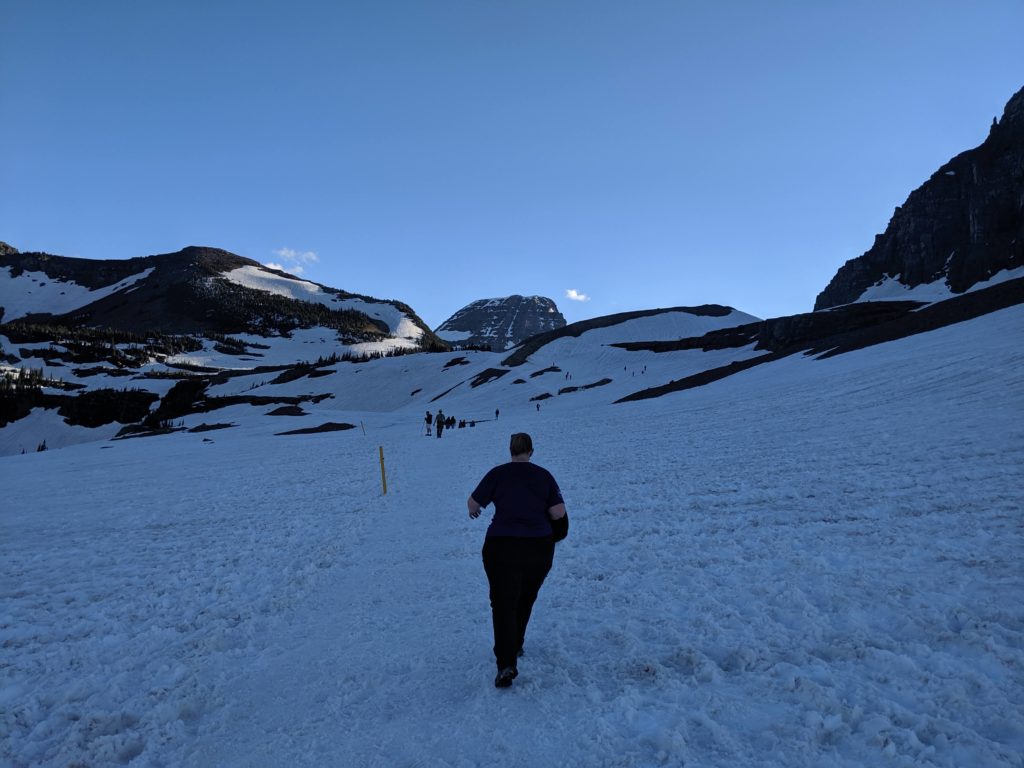
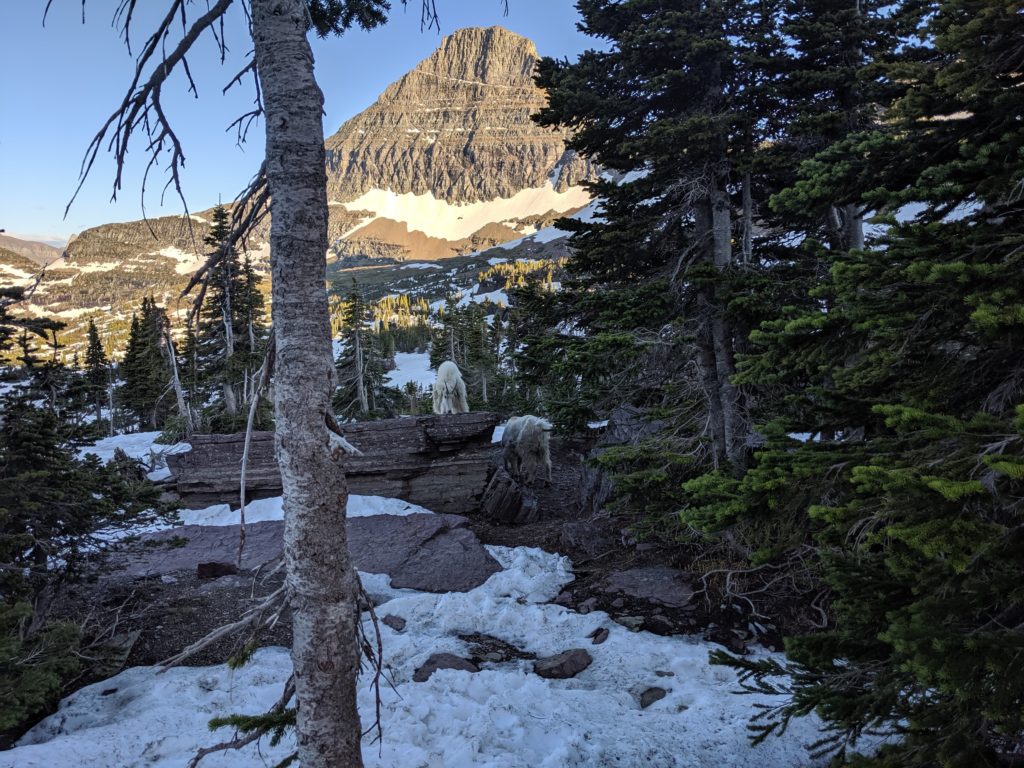
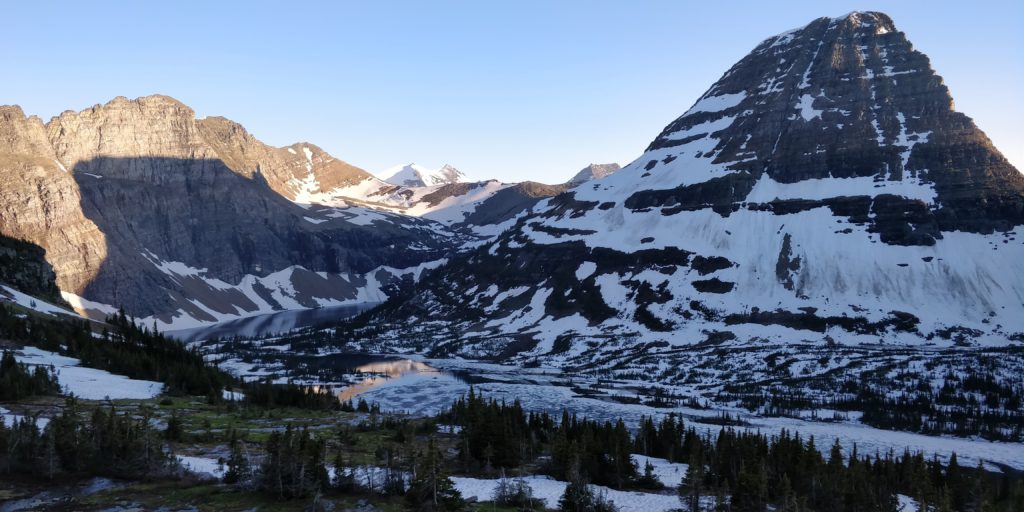
Finally reaching the top, we got to see some breath taking views of the lake and valley below. From the pictures I was able to take with my phone, you almost couldn’t believe that I was actually there. As the sun was setting and we headed back down, it was much easier getting back, using the snow to slide down. Also, only dressed in a long sleeve shirt and pants, being surrounded in snow, it was surprisingly NOT cold!
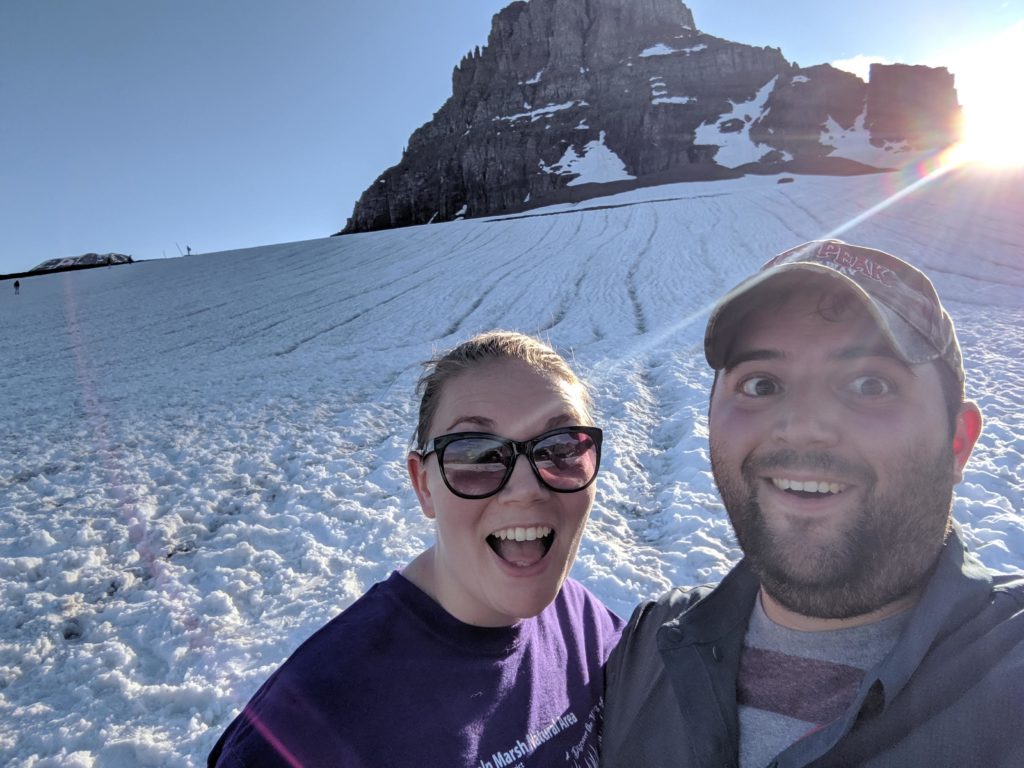
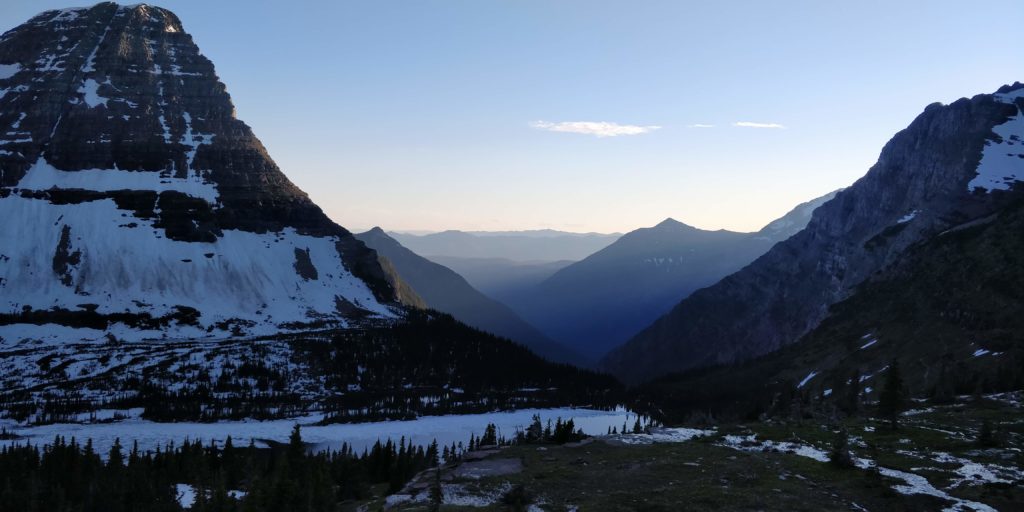
Back to the car, we stopped at a shop and bought some goodies (apparently they don’t care if you drink booze in the park!!) and enjoyed a nice bonfire to wrap up the day.
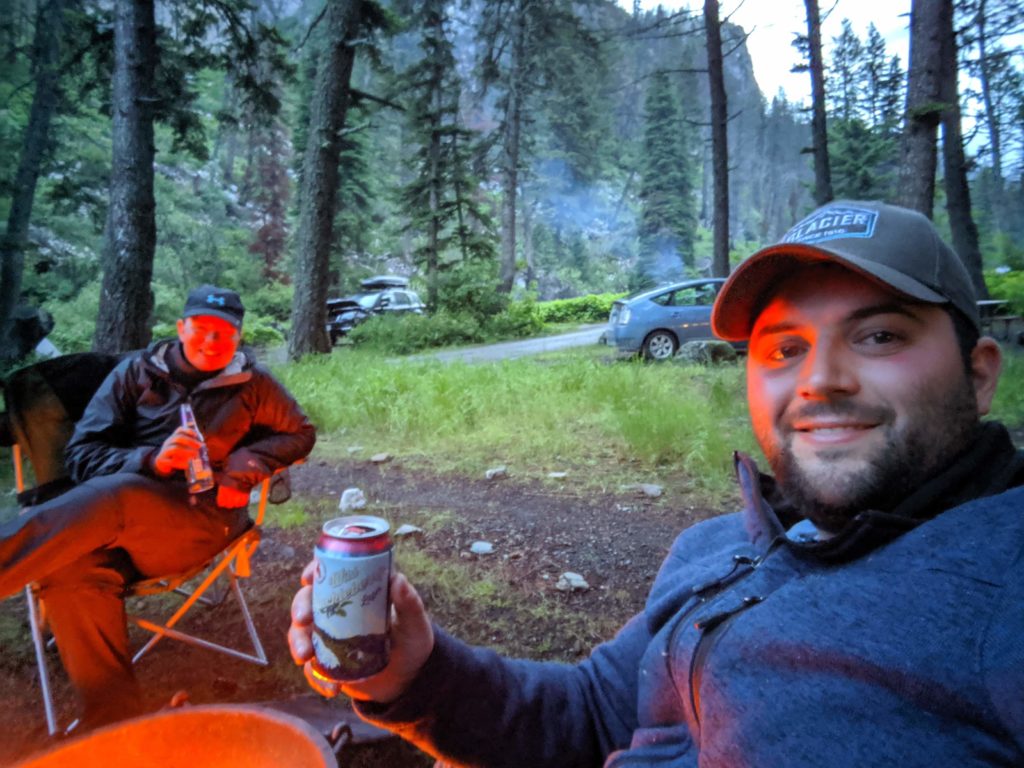
Defying Death on Lake McDonald
I mentioned earlier that we brought our inflatable kayaks. We’ve used them a few times in smaller pods and rivers in Illinois. Apparently, lake McDonald is a whole different animal. Lake McDonald is 10 miles long and 500 ft deep. Think of it like a narrow lake Michigan, except the water is so clear you can almost see the full 500 ft down. Being a beautiful 60°F and not a cloud in the sky, we set off into the lake.
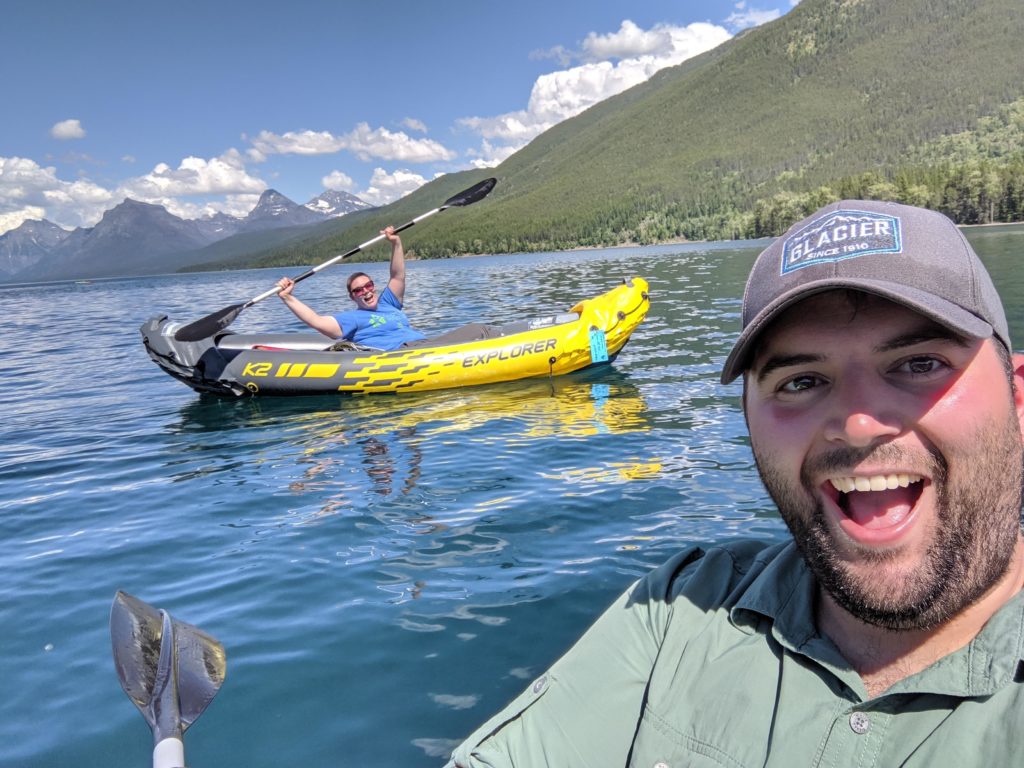
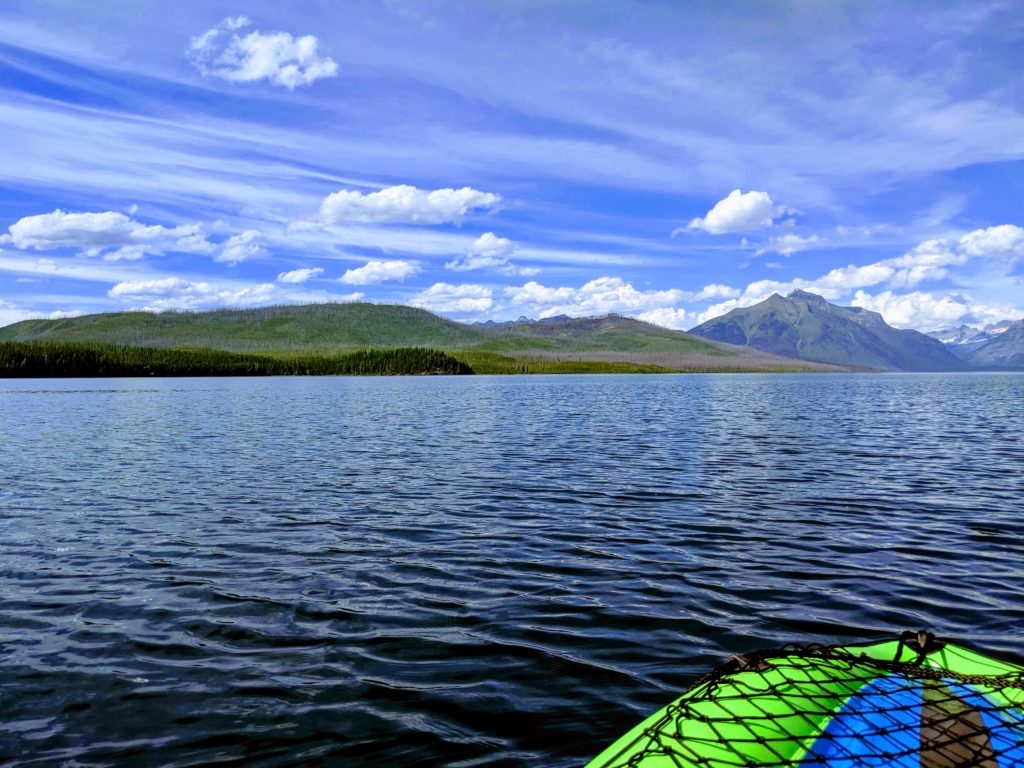
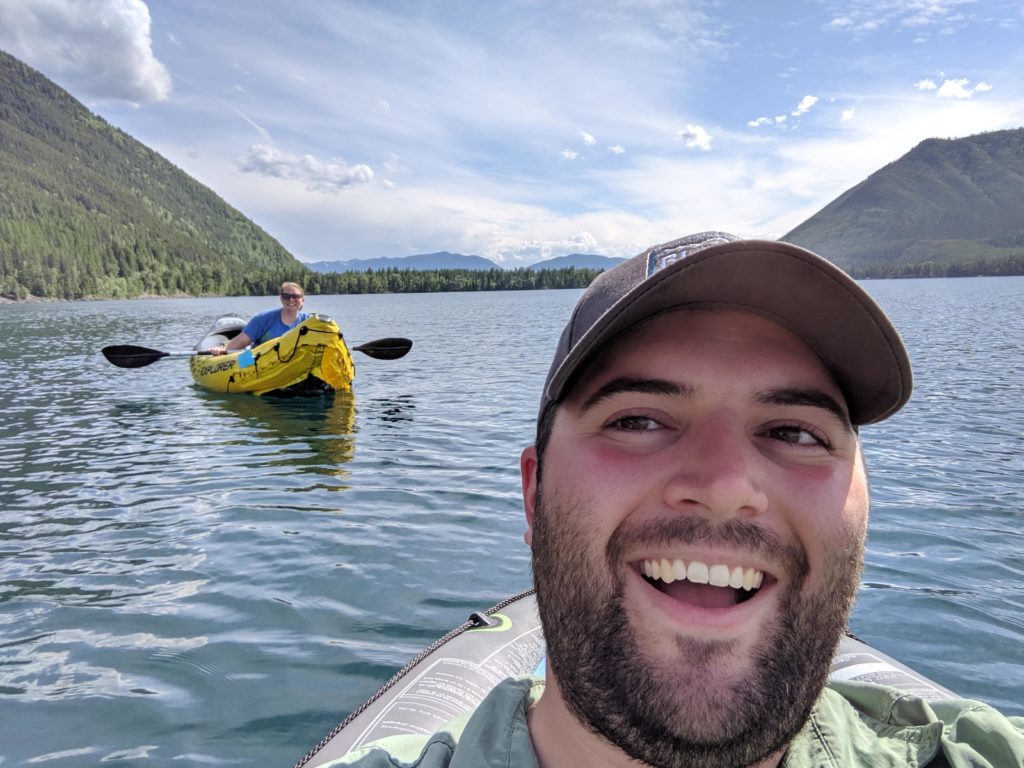
Looking at other people kayaking, we noticed that they stayed close to the edge. We didn’t really think anything of it. We were way to excited and wanted to go exploring. With the water so calm, it was very easy to glide through the water at a decent pace. We got about 3 miles out, made our way to the other side of the lake (not the 10 mile side!!!) and took some really cool pictures of a old burned down forest.
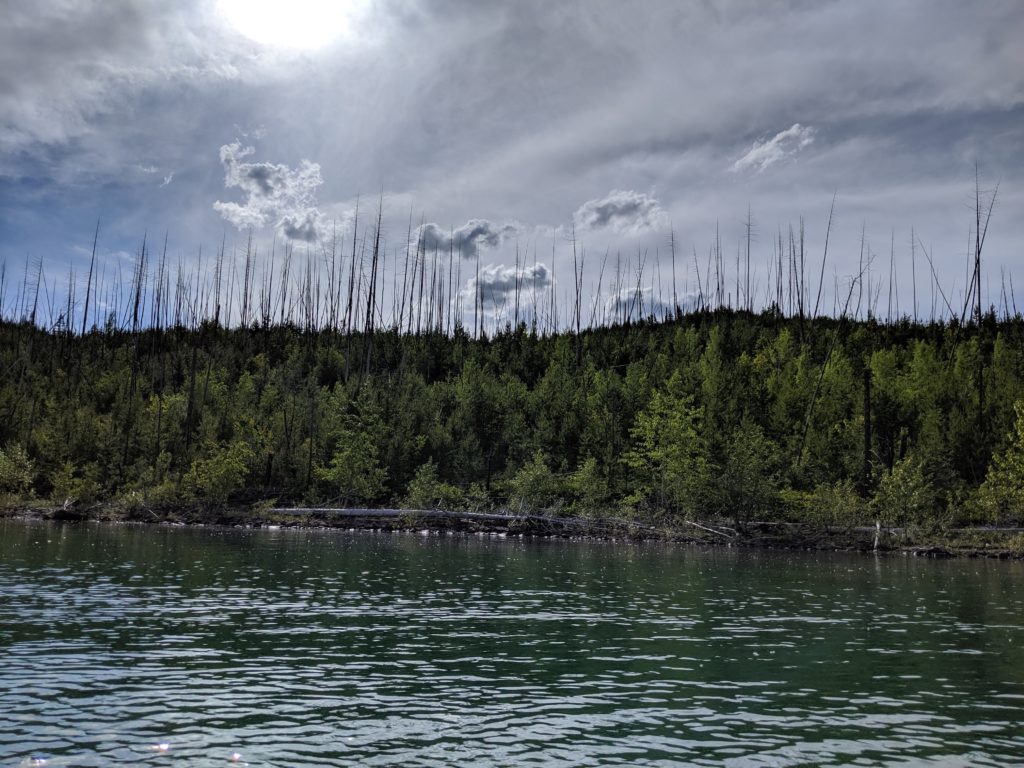
We decided to start making our way back after being out for a few hours. Fun fact, if you are from the Midwest like me, where its stupid flat, you can see storms coming a long ways out. However, it’s hard to see a storm coming when you are surrounded by mountains. Oh how that storm came. Instantly the wind picked up, and so did the waves. Also, remember when I said that it was a 60°F day, yeah turns out the water was a chilly 40°F. Just cold enough where if you were to fall in, you would have a hard time swimming, let alone breathing.
Lake McDonald kills more people than Bears
With the white capped waves rolling in and 2 miles to shore in all directions, this turned into a life or death situation. I was in a constant battle of going against the wind, making sure my kayak was angled right to roll with the on coming waves, and praying I don’t capsize. My wife paddling behind me dealing with the exact same thing. I remember from a podcast a while back where a navy seal was explaining how people can go much further than they think. He said, “When you have that thought that ‘OK I’m done, I can’t do any more’, you’ve only hit 40% of what you can actually do.” My God was he right!
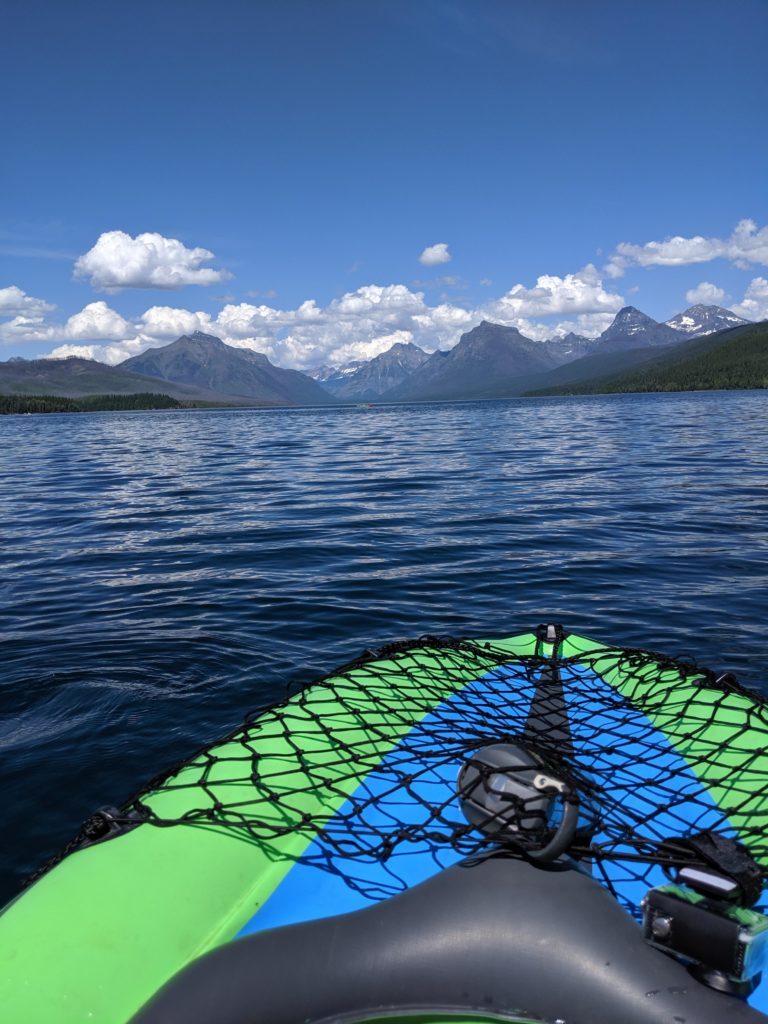
Paddling as hard as I could, my arms were on fire, my hands were ready to snap. I reached shore and I looked back for my wife. Luckily she was not too far behind me. When she finally made it, she fell out of her kayak and started crying. We both decided that we had enough “fun” for the day and celebrated with pizza and beer at a local pub.
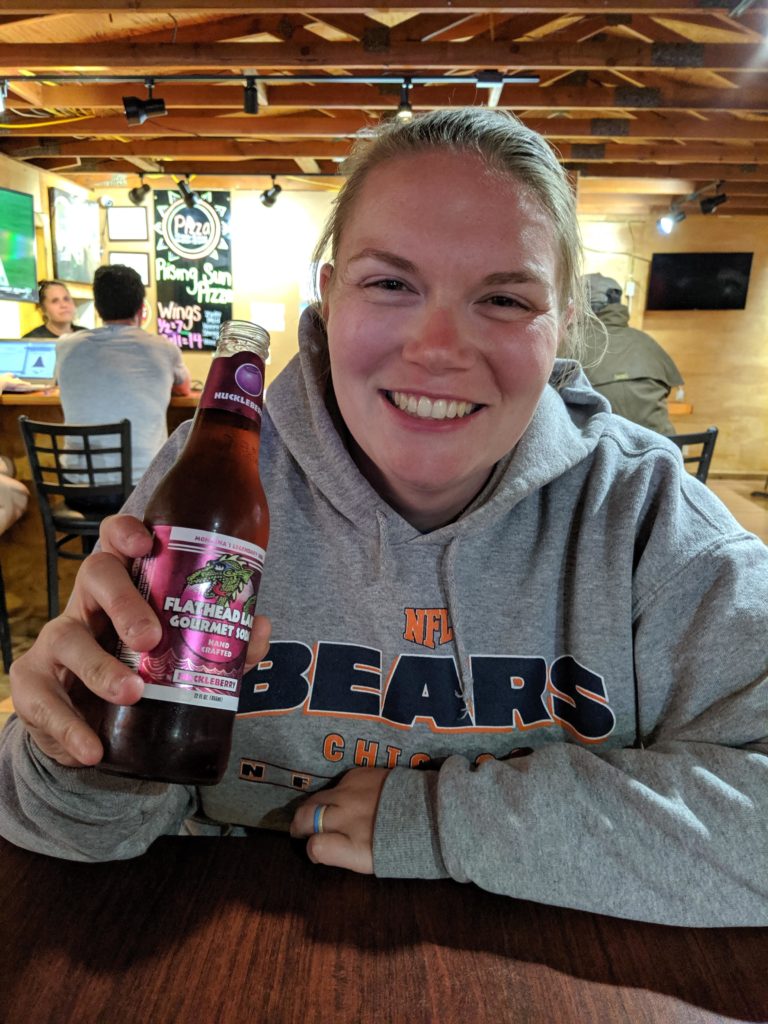

What a Starry Night!

On our way back to the campsite, we saw some commotion at the entrance of the park by the visitors center. There were some astronomers bringing out their massive telescopes (I mean you need a trailer hitch for these ones!) and letting people view stars and galaxies! Living so close to Chicago, I can really appreciate places like Glacier and their complete lack of light pollution. It’s a completely different sky out there. I’m used to only seeing a hand full of stars or planets with the naked eye. But that far in the bush, you can see the Milky way itself! I thought they were clouds! But it was just that many stars in the sky!
The Alps in Glacier National Park
While a majority of Glacier Nation Park is camping in cars and tents, there are in fact hotels. Built in 1914, the hotels were built to give Americans a reason to skip going to the Alps in Switzerland and see the American Alps in Montana. Hence why the building was designed with lots of Swiss influences. We did a tour, bought a few gifts, but were eager to do some exploring outside.
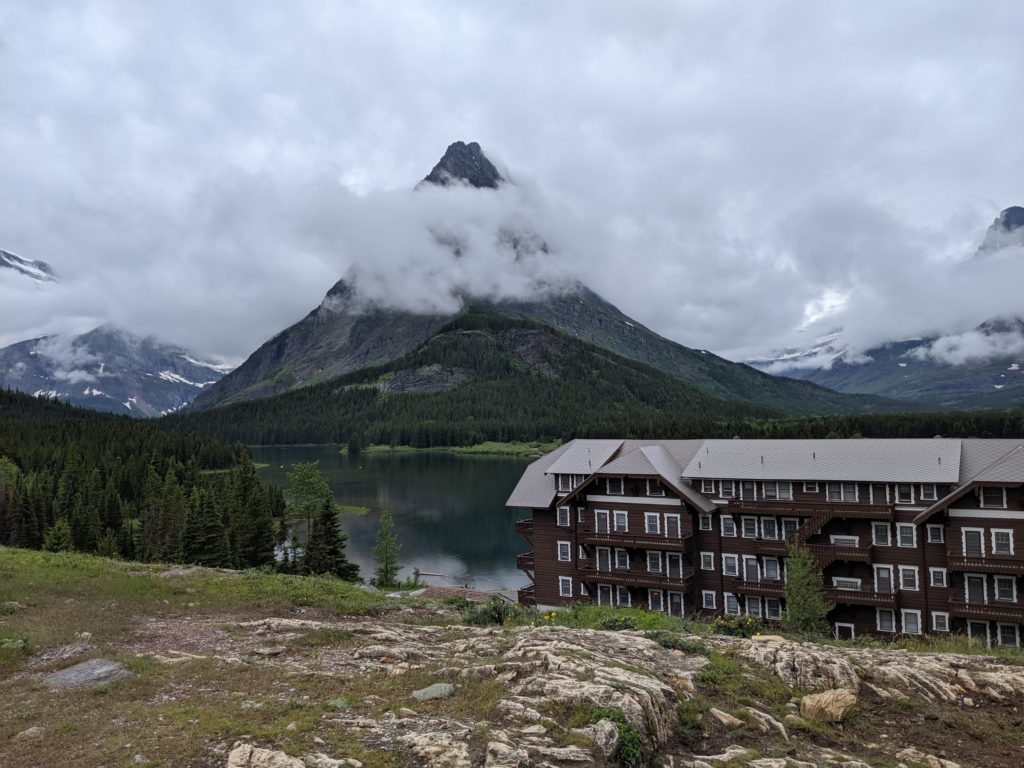
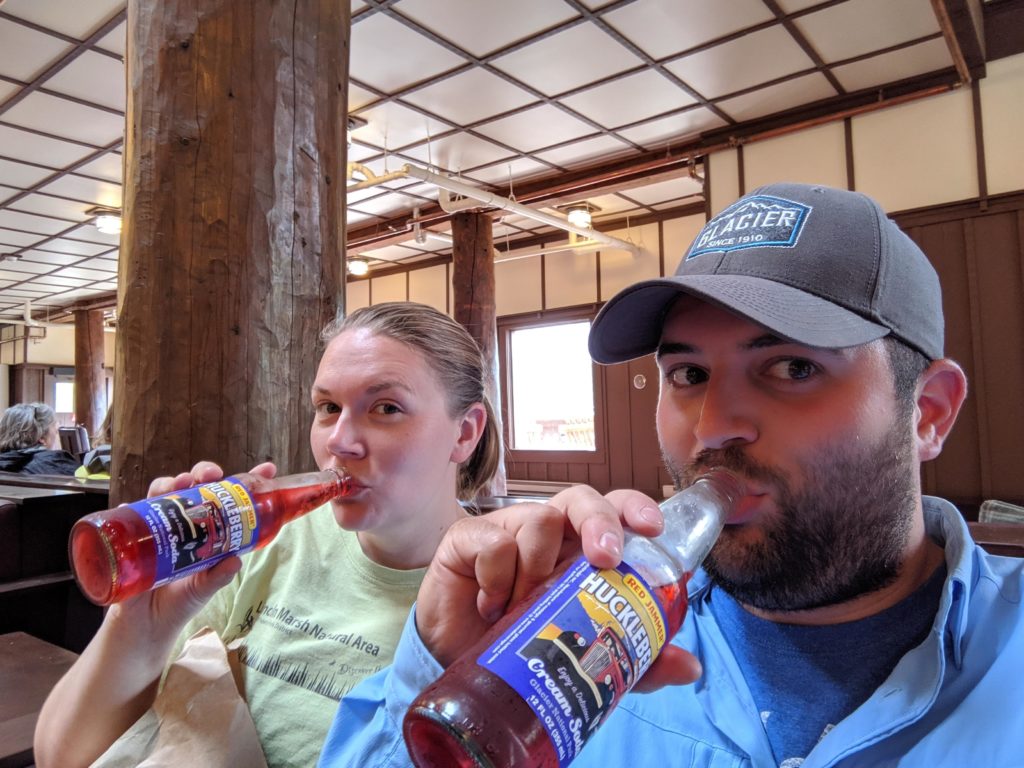
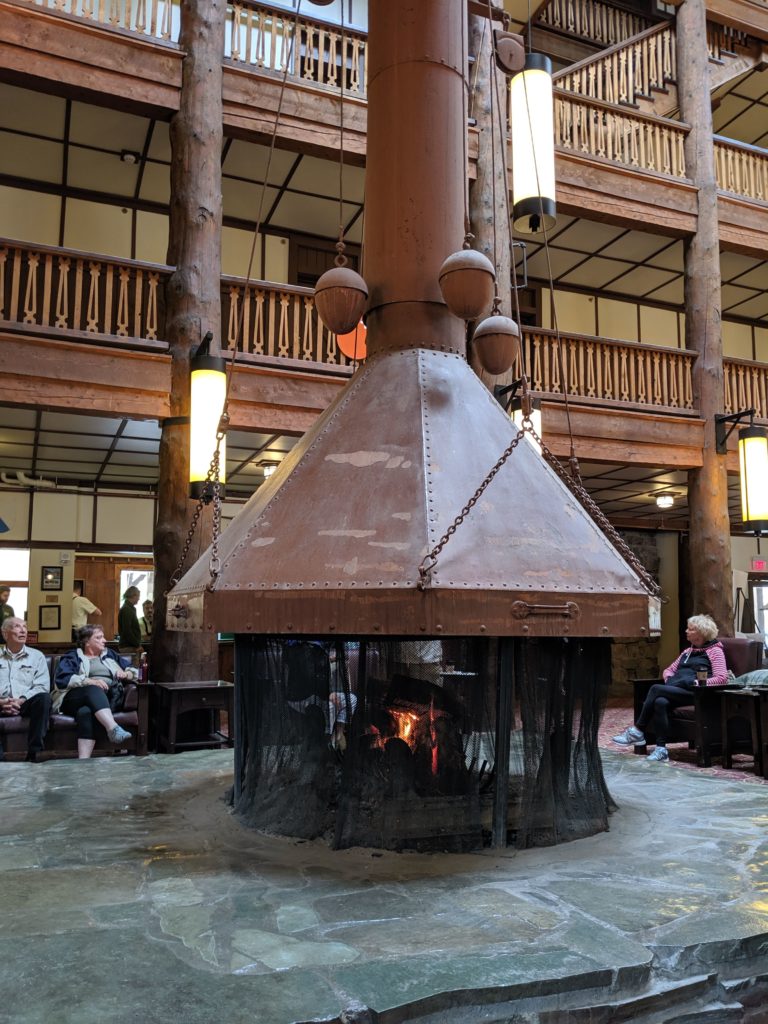
Near the hotel there is a small lake and a few trails. We did some hiking in the morning and kayaked in the afternoon. This lake was a lot smaller, so we were not worried about capsizing and freezing to death like in lake McDonald. We later enjoyed a great meal in the hotel, probably the best Bison Burger I’ve ever had. It was a good way to end our time with Glacier National Park.
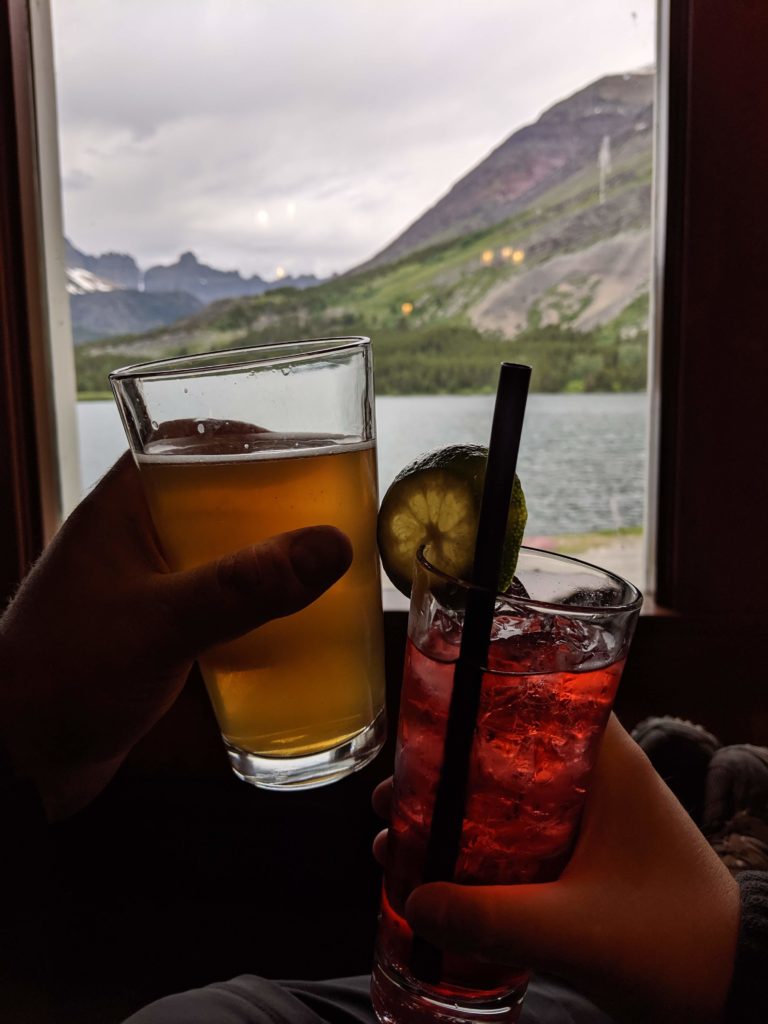
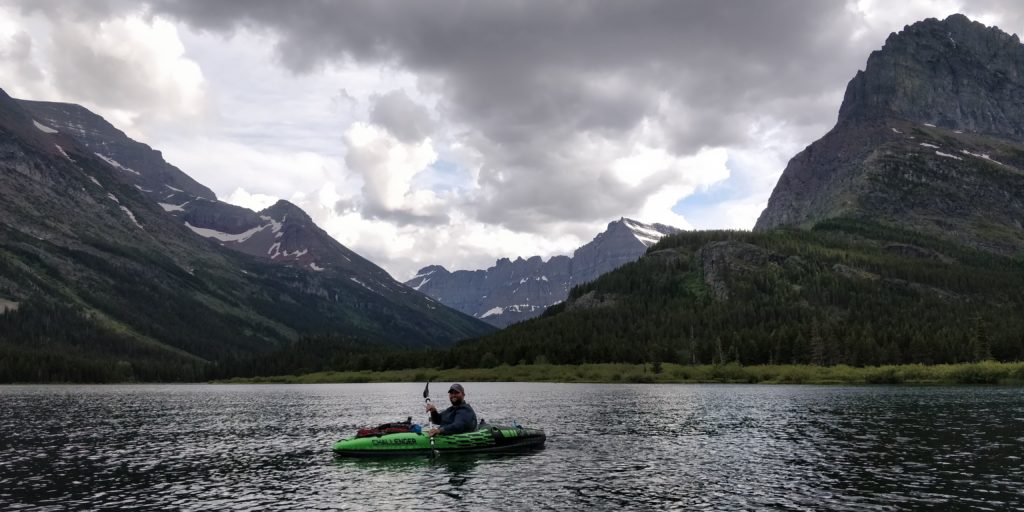
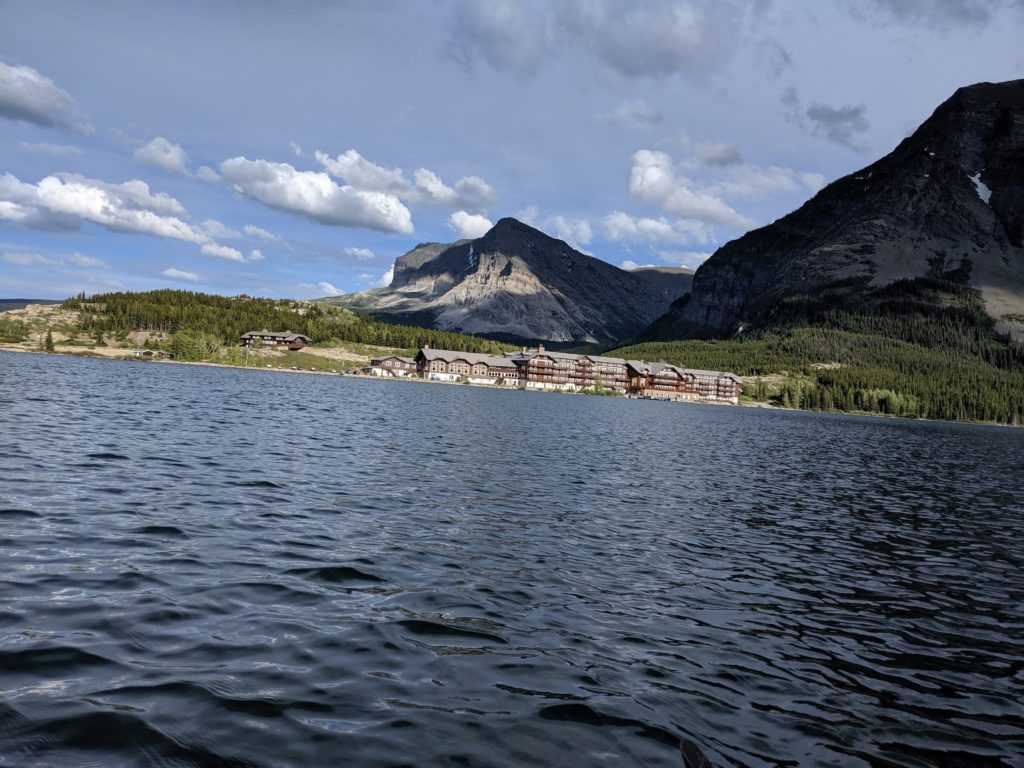
Glacier National Park, Never Forgotten
It might be a very long time until we get a chance to go back to Glacier. We might even be going back with children. Hopefully by the time we do, those Glaciers will still be there, big and beautiful. Just how we saw them in 2019.
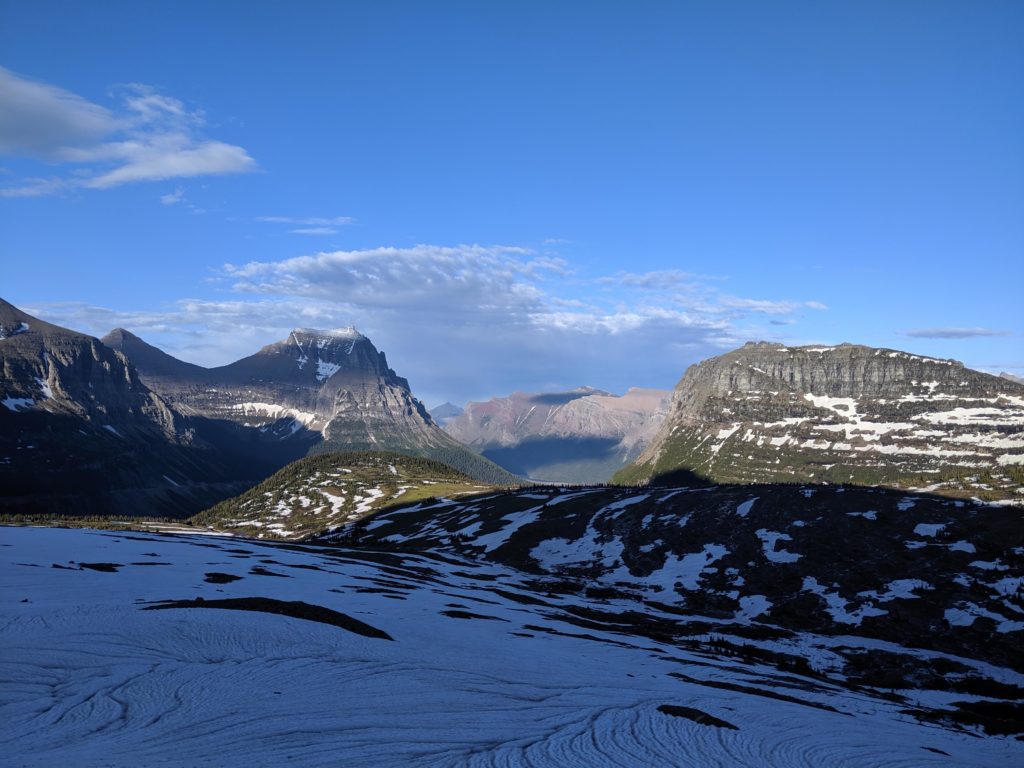
Well, this concludes the end of part 1 of this trip! Part 2 will cover our adventures in Yellowstone and our journey back home! Thanks for reading!
